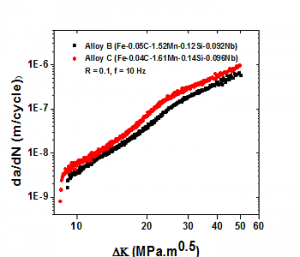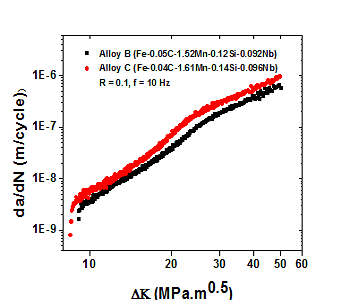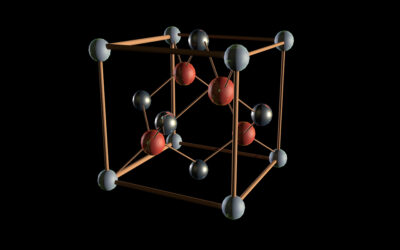 With the globalization of modern society and the increase in population, there is an ever-increasing demand for energy. Therefore, it has become extremely important to develop alternative energy sources, among which hydrogen and natural gases are now under development. Transmission-steel pipelines are the lowest cost method to transport large amounts of hydrogen or natural gases. The fatigue behavior of pipeline steels is therefore very important for the reliability of pipeline systems, since the pipelines are under exposure to pressure and external-load variations.
With the globalization of modern society and the increase in population, there is an ever-increasing demand for energy. Therefore, it has become extremely important to develop alternative energy sources, among which hydrogen and natural gases are now under development. Transmission-steel pipelines are the lowest cost method to transport large amounts of hydrogen or natural gases. The fatigue behavior of pipeline steels is therefore very important for the reliability of pipeline systems, since the pipelines are under exposure to pressure and external-load variations.
In this paper, researchers from the USA and Taiwan focus on studying the fatigue-crack-growth behavior of two types of pipeline steels, Alloy B (Fe-0.05C-1.52Mn-0.12Si-0.092Nb, weight percent (wt.%)) and Alloy C ((Fe-0.04C-1.61Mn-0.14Si-0.096Nb, wt.%)). Tension-tension fatigue-crack-growth experiments were conducted on compact-tension (CT) specimens. They were tested at various frequencies (10 Hz, 1 Hz, and 0.1 Hz) and different R ratios (0.1 and 0.5, R = Pmin/Pmax, where Pmin is the minimum applied load, and Pmax is the maximum applied load) in air.
The effects of frequencies and R ratios on fatigue-crack-propagation behavior are compared. The microstructures of the fractured samples are investigated, using optical microscopy (OM), scanning-electron microscopy (SEM), and transmission-electron microscopy (TEM). It is concluded that higher R ratios lead to faster crack-growth rates, while frequency does not have much influence on the fatigue-crack-growth rates of the two alloys. Moreover, the two alloys exhibited different fatigue behavior in air. Alloy B (Fe-0.05C-1.52Mn-0.12Si-0.092Nb, wt.%) tends to have better fatigue resistance than Alloy C (Fe-0.04C-1.61Mn-0.14Si-0.096Nb, wt.%) under various test conditions in air in the current research.

















